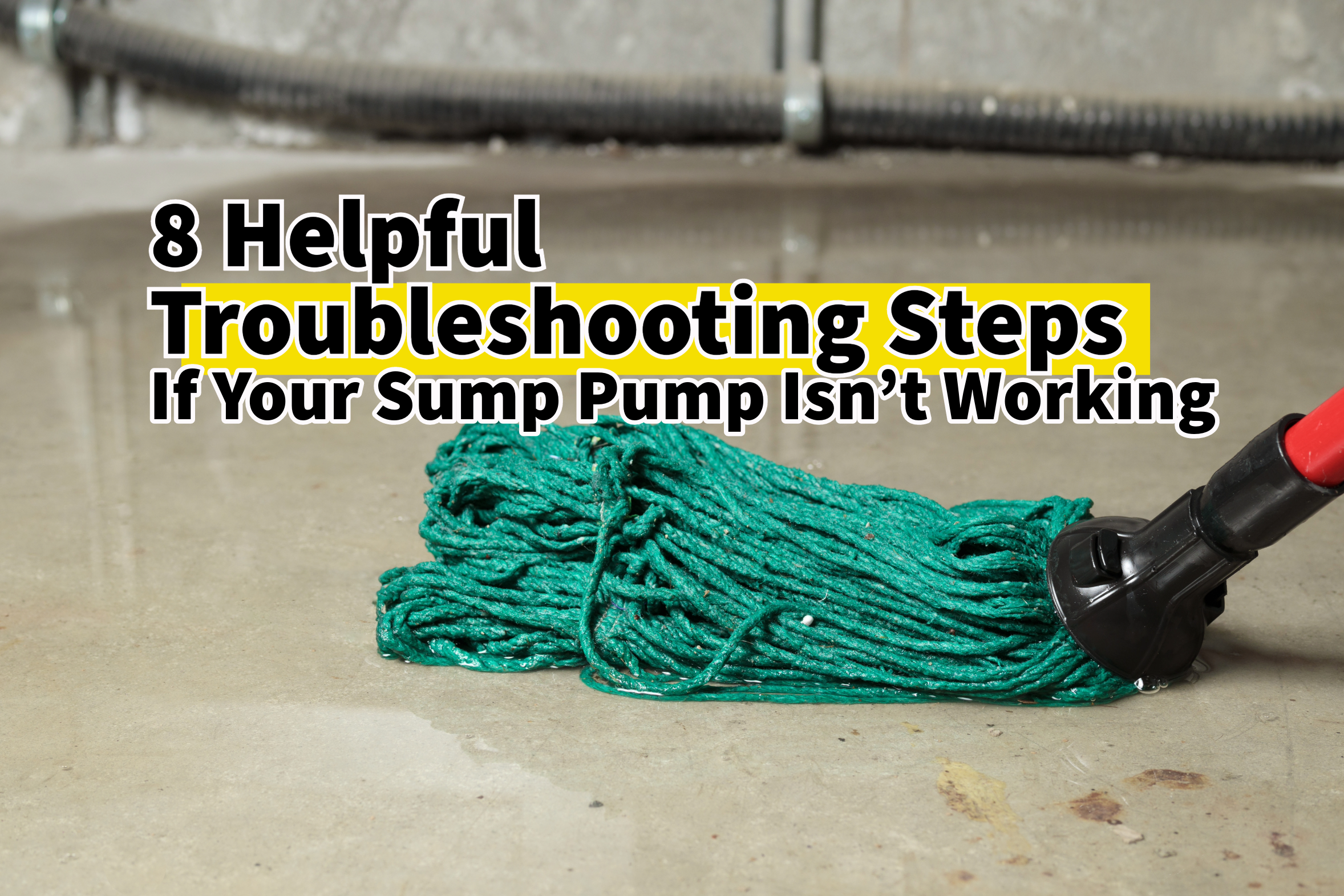Is your sump pump not working? Given the recent weather, this is quite common for those of us in this area. We all know that Ohio weather can cause its fair share of home-related issues. With the snow melt and rain during the winter season, sump pump problems are at their peak. And when your sump pump stops working, it’s something that should be addressed immediately.
Sump pumps are designed to pump water out through the discharge pipe and away from your home’s foundation. If a sump pump suddenly stops working, it can quickly lead to basement flooding and other problems. Fortunately, our team at Westerville Plumbing & Drain is here to help you troubleshoot your sump pump issues in your time of need. In fact, even if you are not presently dealing with this particular plumbing problem, keep reading! Don’t wait for an issue to arise in order to familiarize yourself with these eight helpful ways to find out what is going on with your sump pump.
TRY THESE STEPS TO FIND THE ISSUE:
Step One: Inspect the Power Supply
Power outages often cause sump pump malfunctions. To troubleshoot, start by confirming that the sump pump is plugged in and receiving power. Then, test the outlet with another device to determine if it’s the source of the problem. You can also try unplugging and plugging the pump back in, although this may only provide a temporary solution for the time being. It may at least get you back up and running temporarily.
Step Two: Inspect the Pump Motor
Secondly, you should listen for any loud or unusual noises from the pump motor. If the motor is not running, go ahead and check the circuit breaker and reset it if needed.
Step Three: Inspect the Pump Basin
Moving on to step three, it’s just as important to examine the inside of the sump pump, too. So, take a peek at the inside of the sump pump’s basin to determine the issue. You should look for any debris, dirt, or ice buildup. If you find any, make sure to remove it to prevent any obstructions to the pump’s impeller. If this step did not help you rule out the problem, simply move on to step four.
Step Four: Inspect the Float Switch
Now, check the float switch for proper movement. Here, you will also want to look for any debris that needs clearing and ensure the float switch moves freely. A stuck or frozen float won’t activate the pump as intended.
Step Five: Inspect the Check (or Overflow) Valve
Let us divert our attention to the check (also known as the overflow valve now. It’s important to make sure the check valve is clear of any debris or obstructions. Also, check for any pipe clogs above the valve, as this can affect its overall function. The check valve should effectively stop water from flowing back into the sump pit, so if it has an obstruction, it can most definitely cause issues for your sump pump.
Step Six: Inspect the Discharge Pipe
If your basement is flooded and the water is not being discharged away from your home, it is highly likely that the culprit to your sump pump catastrophe is a clogged discharge pipe. So, turn your focus to locating and checking on the discharge pipe. Should you find a clog, go ahead and remove it.
Step Seven: Inspect the Weeping Hole
Another important place to check is the weeping hole. Sump pumps have a small hole on the discharge pipe to release air and maintain proper operation. So, if the weeping hole gets blocked, the pump won’t work correctly. In case of a clog, simply clear out the weeping hole.
Step Eight: Think About the Sump Pump’s Size
If your sump pump is not properly sized for your space, it won’t be able to handle a large amount of water it’s being faced with. If this specific sump pump issue has happened repeatedly, it might be a good idea to upgrade your pump to avoid this issue from happening again.
You can do it! With determination and focused DIY troubleshooting, you can identify the cause of your sump pump problem. Dealing with sump pump issues in cold weather can be challenging, but remember to prioritize safety. So, please take your time, move slowly and carefully, and follow each troubleshooting step to assess and resolve the situation.
CONSIDER CALLING A PROFESSIONAL PLUMBER FOR HELP:

If you’re still confused and trying to pinpoint the source of the problem, don’t worry! We’re here to help. Please feel free to reach out to us for professional assistance. It’s important to have a licensed plumber inspect your sump pump to identify any underlying problems and get it running again. We’d be thrilled to be chosen to get your sump pump back up and running again.
Consider Putting These Helpful Sump Pump Tips To Use:
Before we wrap up, here are a few valuable tips to help you maintain your sump pump:
One good rule of thumb regarding the maintenance of your sump pump is to make it a habit to regularly check on your sump pump. Simply ensure everything is running smoothly and there are no unusual sounds coming from it. On top of that, always make sure to keep the area around it free from clutter, random objects, and loose debris. Loose debris and random items can cause various problems with the pump, leading to clogs and hindering its functionality. So, always make sure the sump pump pit lid is securely in place and properly sealed. A secure lid will help prevent debris from interfering with the pump’s operation.
Your home’s plumbing system is essential, and various problems can arise when your system is not taken care of properly. Sometimes, even with that, the inevitable still happens. That’s why it’s important to entrust your home to a reliable professional. At Westerville Plumbing & Drain, we prioritize our customers and their safety, comfort, and satisfaction. We are committed to providing you with a 100% satisfaction guarantee!
You can trust Westerville Plumbing & Drain to handle all your plumbing needs. Call us today at (614) 540-3437, or schedule an appointment online now by clicking here!




